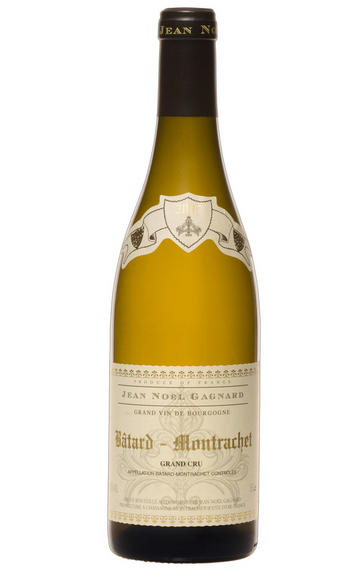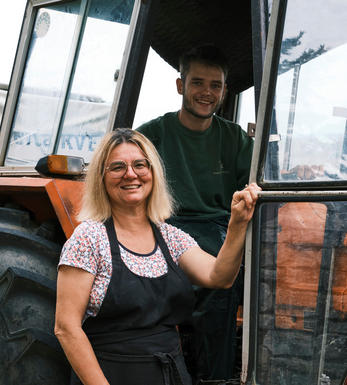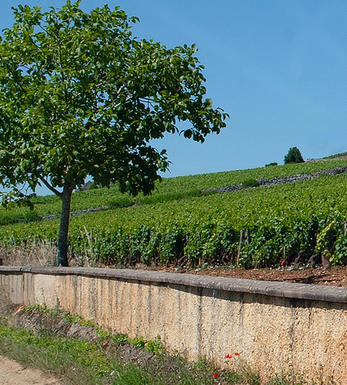
2010 Bâtard-Montrachet, Grand Cru, Domaine Jean-Noël Gagnard, Burgundy

About this WINE

Domaine Jean-Noel Gagnard
Caroline Lestimé took over from her father, Jean-Noël, in 1989, though Domaine Jean-Noël Gagnard still retains his name. The estate’s modern reputation has very much been built by Caroline, who has made it her responsibility to develop the many expressions of Chassagne Montrachet terroirs across her range.
About Domaine Jean-Noël Gagnard
There are 12 different Premiers Crus to choose from; some now carry their own identity, having previously been offered under the larger Morgeot appellation. She has bought more land in Chassagne when available and affordable, and there’s a very well-situated white wine vineyard in the Hautes-Côtes, sold under the L’Estimée brand. Some very attractive reds from Chassagne round off the range.
In the vineyard
The vineyards are all organic, now certified; Caroline plans to put that status on her labels from the 2019 vintage.
In the winery
A little perspective is always an asset with Caroline’s wines: it’s not her style to manipulate or force, and any perception of dumbness is always mitigated once in bottle. Caroline is always very attuned to her wines’ progress during élevage.

Bâtard-Montrachet
Renowned for its exceptional white wines, Bâtard-Montrachet is a Grand Cru appellation, situated in the heart of the Côte de Beaune subregion of the larger Côte-d'Or department. The vineyards are nestled between the villages of Puligny-Montrachet and Chassagne-Montrachet.
The terroir is characterised by a mixture of limestone and clay soils, with a significant proportion of limestone, which contributes to the unique mineral character of the wines. The region benefits from a continental climate with some influence from the nearby Saône River, providing ideal conditions for cultivating Chardonnay grapes.
The wines are celebrated for their complexity, richness, and intensity and typically exhibit ripe fruit flavours such as citrus, pear, and peach, along with notes of hazelnut, honey, and minerals. Bâtard-Montrachet wines are known for their exceptional ageing potential, often improving and developing more complexity over many years in the bottle.

Chardonnay
Chardonnay is often seen as the king of white wine grapes and one of the most widely planted in the world It is suited to a wide variety of soils, though it excels in soils with a high limestone content as found in Champagne, Chablis, and the Côte D`Or.
Burgundy is Chardonnay's spiritual home and the best White Burgundies are dry, rich, honeyed wines with marvellous poise, elegance and balance. They are unquestionably the finest dry white wines in the world. Chardonnay plays a crucial role in the Champagne blend, providing structure and finesse, and is the sole grape in Blanc de Blancs.
It is quantitatively important in California and Australia, is widely planted in Chile and South Africa, and is the second most widely planted grape in New Zealand. In warm climates Chardonnay has a tendency to develop very high sugar levels during the final stages of ripening and this can occur at the expense of acidity. Late picking is a common problem and can result in blowsy and flabby wines that lack structure and definition.
Recently in the New World, we have seen a move towards more elegant, better- balanced and less oak-driven Chardonnays, and this is to be welcomed.


Buying options
Add to wishlist
Description
This is a truly massive wine! Glowing a pale yellow it is very weighty and fully ripe. There’s even a touch of honey to the bouquet which is simply gorgeous. Very broad on the palate it is significantly opulent and exceptionally dense. This is most definitely a Grand Cru.
Jasper Morris MW, Burgundy Director
Caroline l’Estimé (née Gagnard) has been ploughing her vineyards since 2000 to avoid the use of herbicides and switched to full organic farming from 2010 with certification beginning from 2011. Noted soil scientist Claude Bourguigon is consulting. The 2010s were picked quickly (not many grapes alas) between 21st and 24th September, with any rot resulting from the famous storm having dried out or turned noble.
wine at a glance
Delivery and quality guarantee